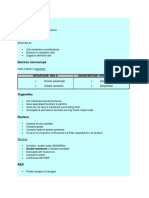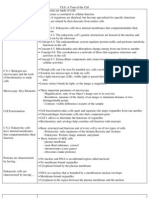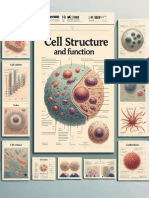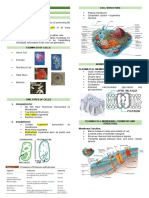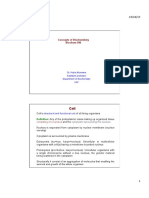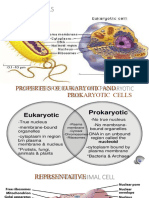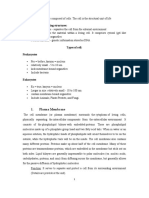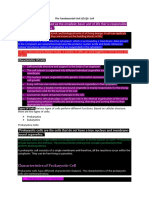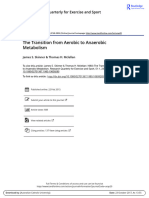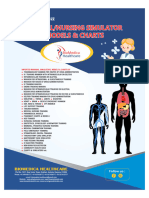BIOLOGY 201/Winter 2018 Dr.
Ian Ferguson
Lecture 3 (week 2)
Phospholipid Bilayer:
1) The non-polar makes it relatively impermeable to polar molecules
2) Non-polar molecules (CO2, lipids) diffuse through freely
3) Small polar molecules (water, ethanol) differ through but much more slowly
4) Larger polar molecules (glucose) and ions diffuse hardly if at all
5) Thus it is a semi-permeable membrane
6) There are also proteins embedded in the bilayer, amino acids polar & non-
polar corresponding to the phospholipids, that are always shifting around;
the plasma is fluid, not solid
7) It is possible to fuse
a. Ex: A mouse cell and a human cell can fuse because the plasma
membrane will keep shifting until proteins are bound together
Channel Proteins:
Channel proteins are the pipe that allows substances to pas through the
bilayer that normally wouldn’t. They don’t have control over the movement,
they just allow things through. They’re very specific with regards to what can
pass through them (specific characteristics of the amino acids that pass
through)
o They normally allow in small proteins with less amino acids (more
specific than a big one)
o They don’t control the direction of the movement
o Aquaporins are channel proteins specific for water molecules
Gated Channel Proteins:
Gated channel proteins are just like channel proteins in the sense that they
have no control over the direction of the movement and the specificity of the
amino acids, but they can open and close depending on what’s happening
around the membrane.
These are very important when it comes to neurons
Carrier Proteins:
Carrier proteins can pick up certain larger molecules and release it inside the
cell through the membrane; in a sense the same as the channel proteins but
with larger molecules.
It too has no control over the direction of the movement and have specific
characteristics of what they allow to pass
Facilitated Diffusion or Passive Transport
Simple diffusion facilitated by the presence of the proteins but they just sit
there, the cell isn’t spending any energy
Active Transport:
Functions similar to the channel proteins: it spends energy from the cell in
the form of ATP, that gets transformed into ADP as the protein uses it
They require energy to function and properly transport elements
These proteins can pick up elements at will, like a pump, and release it inside
the cell
The cell has control over the direction of the movement regardless of the
concentration levels inside and outside the cell
Bacterial Cell (Prokaryotic Cell):
1) Bare minimum for prokaryotic cell
Cytosol: plasma, liquid inside the cell
Plasma membrane: surrounding membrane
Ribosome: Site of protein synthesis
Nucleoid: Carrier of much of the genetic information; single loop of
double-stranded DNA (no ends; tangled loops)
2) Most cells also harbour
Cell wall (not plasma membrane, not cytosol) surrounding the cell
Rigid, gives the cell a shape and protects it from bursting (if you have a
higher concentration of water outside the cell and it was to get into it, the
cell wouldn’t burst because of the wall)
3) Optional components
Flagellum are tails to promote motility in water by rotating
Thylakoids (membrane sacs) provide a membrane for photosynthesis
Capsule: thick, gooey layer outside the cell wall that protects the cell
from dehydration or detection by other cells
Plasmid: extra loop of DNA; some have one, some have a few. Carries
accessory genetic information that can surpass an antibiotic and pass
genes on
Eukaryotic Cell (Animal, Fungal, etc)
1) Bare minimum for eukaryotic cell
Different amongst themselves even inside the same organism
Cytosol: complex mixture of enzyme, water and other molecules inside a
cell
Plasma membrane: surrounding the cell, differ from organism to
organism
Ribosome: site of protein synthesis
Some can also have flagellum (water motility through whipping, not
rotating)
Some cells can have cilium, or single cilia (beating in a coordinated
manner to provide motility, looks similar to eyelashes)
Crucial Differences between Prokaryote and Eukaryote:
No nucleoid: inside the nucleus there is chromatin (most of the genetic
information of the cell is found, made of several diffuse chromosomes)
Each chromosome is one double-stranded DNA molecule with associated
proteins (ended bits, not in a loop)
Nucleolus (might be more than one in some cells) is the site of assembly of
ribosomes, surrounded by the chromatin
Nuclear envelope:
o Surrounding the chromatin, boundary between cytosol and nucleus
o Also a phospholipid bilayer and has openings (nuclear pores)
o Creates two separated environments between cytosol and nucleus for
different chemical conditions, so certain reactions can happen
Nucleus:
o Assembly of nuclear envelope, chromatin and nucleolus
o Crucial difference between prokaryotic cells is the membrane-bound,
well defined nucleus; although some cells can lose this wll defined
nucleus (ex: Red blood cells)
Organelles (organisms found in eukaryotic cells):
Cytoplasm is the general term used to refer to everything between the
nucleus and the plasma membrane
Smooth Endoplasmic Reticulum:
o Part of the same membrane (continues) as the nuclear envelope; it’s
the site of the synthesis of lipids and the destruction/break down of
drugs and toxins by the cells
Rough Endoplasmic Reticulum:
o Also part of the same membrane as the nuclear envelope (continued);
it has ribosomes stuck to its surface (that’s why its called rough)
o It packages the proteins that need packaging, synthesized in the
ribosomes on its surface (synthesis of proteins to be packaged to
perform their function; like insulin)
Golgi Apparatus/Complex:
o Made of the same membrane as the nuclear envelope (discontinued),
but its not part of the same structure.
o Site of packaging, modifying and sorting of proteins from the rough
endoplasmic reticulum
Vesicles:
o Small membrane sacks of material that are made of the same
phospholipid bilayer material; they transport the proteins from the
RER to the Golgi Apparatus or transport secretory materials to be
excreted from the cell
Vacuoles:
o Simply a larger vesicle; the lysosome is a type of vacuole that carried
digestive enzymes
Mitochondria (mitochondrion in plural) generated ATP for the cell, it’s the
most important source of energy for the cell
o Each mitochondria has an outer membrane; it’s a lot like the plasma
membrane of an eukaryotic cell
o They also have an inner membrane, that although, similar to
phospholipid bilayer, it harbours characteristics similar to a
prokaryotic cell
o Matrix, a lot like cytosol, where the mitochondrial ribosomes float
(these ribosomes have certain similar aspects to prokaryotic
ribosomes)
o Each mitochondria also has their own loop of DNA
Cytoskeleton is the fibres connecting everything inside the cell, important in
intracellular transport. They give the cell shape and movement (as in
comparison to the cell wall in prokaryotes, with extra function). They’re
linked to the channel proteins and plasma membrane
o They acquire different forms and fold, which make for cytosis, that is
transport via folding of a membrane (endocytosis means entering the
cell by cytosis)
Phagocytosis is the endocytosis of elements and pinocytosis is
the endocytosis of liquid, while exocytosis means exiting the
cell via cytosis)
o An example of endocytosis happens when bacteria or an organism
enters the cell through a folding of the phospholipid bilayer; forming a
vesicle around the bacteria. The reverse process also works for
exocytosis
o Lysosome: digesting useless molecules and other things from the cell
and excreting through exocytosis
o Transport within the cell happens through forms of cytosis which can
include vesicles and cell folding; or accompanies by specialized
proteins through the cell skeleton
o Cytosis is in a way active transport because it spends energy, but
nothings actually entering the cell (membrane folds around it)
Centrosome each have a pail of structures called centrioles; that organzizes
the cytoskeleton to function properly (also referred to as a microtubule
organizing centre)
Outside the phospholipid bilayer
o Eukaryotic cells have an extracellular matrix, that can be a very
complex tangle of molecules that strengthens tissues, helps the cell to
react to environment (ex: with glycoproteins or collagen)
In the phospholipid bilayer, there is cholesterol (non-polar molecule,
favourable environment) that helps maintain membrane fluid
In the plasma membrane there are also enzymes and receptor proteins,
structures that give the cell identity by responding to specific chemicals like
lock and key (allow the cell to be recognized)
Tight junction proteins are also along the phospholipid bilayer from a link
of starts that holds cells together to one another



